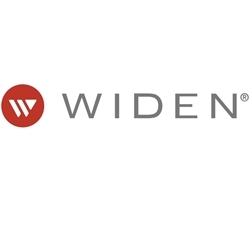Choosing a digital asset management (DAM) solution from a sea of vendors can be overwhelming. But it doesn't have to be. You can clarify the chaos with a simple request for proposal (RFP) process.
To start, it's important to distinguish your RFP from an RFI (request for information) or an RFQ (request for quote). An RFI comes before an RFP and educates, whereas an RFQ comes after an RFP and delves into pricing options.
Your RFP is focused on lining up your organization's requirements and challenges with how a software solution—in this case, DAM—meets them.
Here's a simple breakdown of an RFP process to use with any DAM vendor, plus where to get started and what to expect.
What Does the RFP Process Look Like?
An RFP process takes time and resources. To avoid wasting either of those, approach your RFP methodically. You don't need a Lean Six Sigma consultant to design the process; you just need to make sure you plan for and execute nine important steps:
- Form a stakeholder team
- Establish evaluation criteria
- Write your RFP
- Create a vendor shortlist
- Issue RFP to vendors
- Accept questions from vendors
- Receive and evaluate RFP packages
- Schedule demos
- Announce selected vendor
If you want a full look into each of those steps, you can read this in-depth RFP article.
Now that you have a simple process to follow, let's cover how to get started and what to expect along the way.
How to Start Your RFP
It's time to put your fingers to the keys and get writing. There's no ideal formula for writing an RFP, but you can use some best-practices (and this helpful RFP template) to make sure you gather the information you need to make the most informed decision.
While you're writing, focus on assembling scenarios instead of building a checklist. Create user stories about the problems you need to solve in your organization. Come up with 3-5 stories that highlight the biggest challenges you want a DAM system to solve. From there, your vendors can explain how their features meet your needs.
Reach out to internal partners across Marketing, Creative, Communications, IT, Video, and others to make sure you've got your scenarios outlined holistically and accurately. It's likely someone will have vital pieces to add—even a whole new use case—that can help choose your DAM solution.
Spend time thinking about future scenarios, too: What kinds of DAM needs might you have next year? In five years?
Look at research and reviews from Gartner, Forrester, G2 Crowd, and Capterra to see what systems others are relying on for their current and future needs. If you consider your growth plans, your RFP sets you up to scale and succeed as your business evolves.
Once you've got a good start on writing your RFP, it's time to put it into action. Here are a few common things to expect from the rest of your RFP process.
What to Expect From Your RFP Process and Beyond
At the beginning of a RFP process, someone is inevitably going to ask, "Do we really need to go through all of this?" And to be fair, it's actually a good question. If your project is small and you're looking for basic DAM capabilities, you might not need to do a full RFP. When you're already familiar with some DAM options, you could have a few simple vendor conversations, demos, and trial sessions.
If you do proceed with your RFP process, however, make sure to plan out a realistic timeline. You're going to have to meet with stakeholders, wait for responses from vendors, review proposals, and modify your own RFP as you go. The entire RFP process takes a minimum of eight weeks—often longer.
Beyond that, 'people tend to forget one important thing: The end of a successful RFP process comes with another step—change management.
Once you've selected your new vendor and announced your DAM partner, you'll have to introduce the new DAM solution to your company. Plan time for that and communicate objectives thoroughly with the right teams as you go along.
DAM Evaluation Toolkit
No matter where you are in the RFP process, it's beneficial to have expert help when evaluating your potential DAM solutions. Have you covered all the challenges you want a DAM platform to solve? Do you know how a DAM system fits into your technology ecosystem?
Here's some help for you to answer those questions: Just download the DAM Evaluation Toolkit to find templates, tips, and exercises to help you create a comprehensive RFP process and find your next DAM platform.




